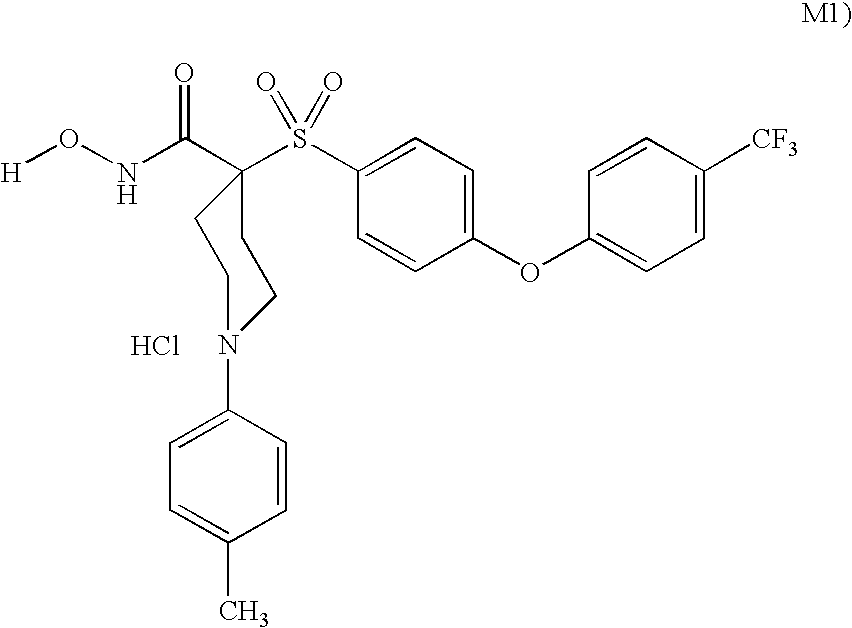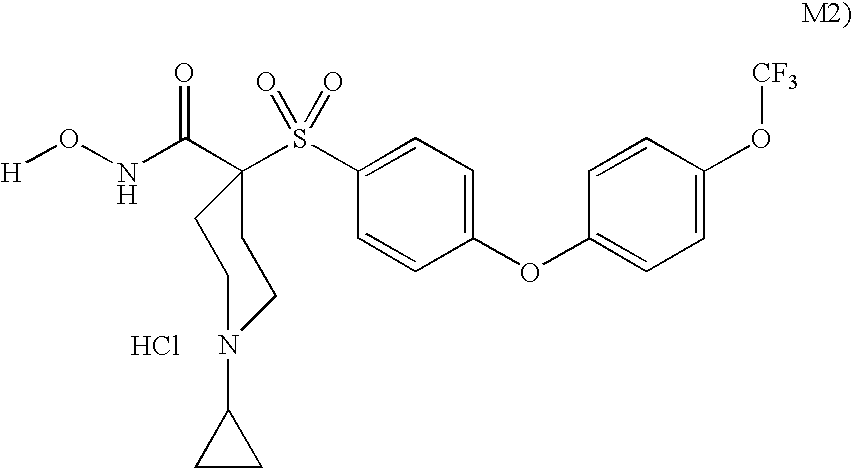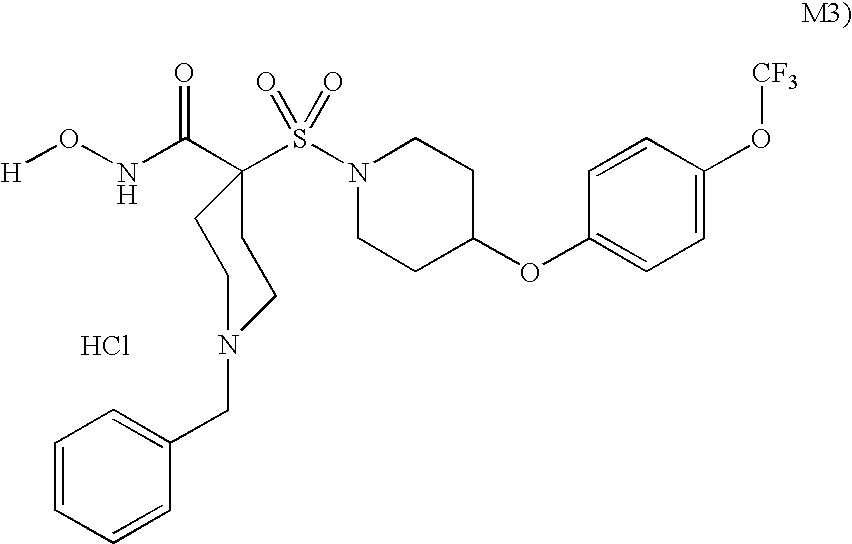Method of using a matrix metalloproteinase inhibitor and one or more antineoplastic agents as a combination therapy in the treatment of neoplasia
a technology of matrix metalloproteinase and antineoplastic agent, which is applied in the field of combination therapy of matrix metalloproteinase inhibitor and one or more antineoplastic agents in the treatment of neoplasia, can solve the problems of inappropriate cell growth, no longer controlling cell growth, and inability to treat tumors located in other areas such as the backbone, and can not be used in the treatment of disseminated neoplastic conditions such as
- Summary
- Abstract
- Description
- Claims
- Application Information
AI Technical Summary
Benefits of technology
Problems solved by technology
Method used
Image
Examples
example 1
In many countries including Japan, Europe and America, the number of patients with lung cancer is fairly large and continues to increase year after year and is the most frequent cause of cancer death in both men and women. Although there are many potential causes for lung cancer, tobacco use, and particularly cigarette smoking, is the most important. Additionally, etiologic factors such as exposure to asbestos, especially in smokers, or radon are contributory factors. Also occupational hazards such as exposure to uranium have been identified as an important factor. Finally, genetic factors have also been identified as another factor that increase the risk of cancer.
Lung cancers can be histologically classified into non-small cell lung cancers (e.g. squamous cell carcinoma (epidermoid), adenocarcinoma, large cell carcinoma (large cell anaplastic), etc.) and small cell lung cancer (oat cell). Non-small cell lung cancer (NSCLC) has different biological properties and respons...
example 2
Survival from colorectal cancer depends on the stage and grade of the tumor, for example precursor adenomas to metastatic adenocarcinoma. Generally, colorectal cancer can be treated by surgically removing the tumor, but overall survival rates remain between 45 and 60 percent. Colonic excision morbidity rates are fairly low and is generally associated with the anastomosis and not the extent of the removal of the tumor and local tissue. In patients with a high risk of reoccurrence, however, chemotherapy has been incorporated into the treatment regimen in order to improve survival rates.
Tumor metastasis prior to surgery is generally believed to be the cause of surgical intervention failure and up to one year of chemotherapy is required to kill the non-excised tumor cells. As severe toxicity is associated with the chemotherapeutic agents, only patients at high risk of recurrence are placed on chemotherapy following surgery. Thus, the incorporation of an antiangiogenesis...
example 3
Today, among women in the United States, breast cancer remains the most frequent diagnosed cancer. One in 8 women in the United States are at risk of developing breast cancer in their lifetime. Age, family history, diet, and genetic factors have been identified as risk factors for breast cancer. Breast cancer is the second leading cause of death among women.
Different chemotherapeutic agents are known in art for treating breast cancer. Cytotoxic agents used for treating breast cancer include doxorubicin, cyclophosphamide, methotrexate, 5-fluorouracil, mitomycin C, mitoxantrone, taxol, and epirubicin. CANCER SURVEYS, Breast Cancer volume 18, Cold Spring Harbor Laboratory Press, 1993.
In the treatment of locally advanced noninflammatory breast cancer, MMP inhibitors can be used to treat the disease in combination with other MMP inhibitors, or in combination with surgery, radiation therapy, chemotherapeutic agents, or with other antiangiogenic agents. Preferred combinations ...
PUM
| Property | Measurement | Unit |
|---|---|---|
| molecular weight | aaaaa | aaaaa |
| molecular weight | aaaaa | aaaaa |
| platelet aggregation | aaaaa | aaaaa |
Abstract
Description
Claims
Application Information
 Login to View More
Login to View More - R&D
- Intellectual Property
- Life Sciences
- Materials
- Tech Scout
- Unparalleled Data Quality
- Higher Quality Content
- 60% Fewer Hallucinations
Browse by: Latest US Patents, China's latest patents, Technical Efficacy Thesaurus, Application Domain, Technology Topic, Popular Technical Reports.
© 2025 PatSnap. All rights reserved.Legal|Privacy policy|Modern Slavery Act Transparency Statement|Sitemap|About US| Contact US: help@patsnap.com



